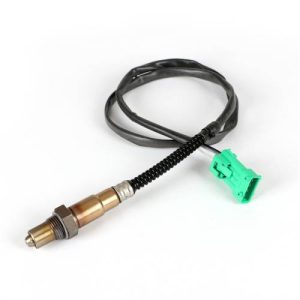Your cart is currently empty!
O2 sensor downstream How to clean and maintain?
The O2 sensor downstream is a critical component in your vehicle's exhaust system, responsible for monitoring and regulating the oxygen levels in the exhaust gases. Proper maintenance of this sensor is essential to ensure accurate readings and optimal engine performance. In this article, we will provide you with essential tips on how to clean and maintain the O2 sensor downstream, ensuring your vehicle runs smoothly and efficiently.
Understanding the Importance of the O2 Sensor Downstream
The O2 sensor downstream is located after the catalytic converter in the exhaust system. Its primary function is to measure the oxygen content in the exhaust gases and provide feedback to the Engine Control Unit (ECU). The ECU uses this data to adjust the air-fuel mixture, ensuring efficient combustion and reducing harmful emissions.
A well-functioning O2 sensor downstream is crucial for achieving optimal fuel efficiency, engine performance, and meeting emission standards. Regular maintenance of this sensor can extend its lifespan and prevent potential issues that could lead to reduced performance and increased pollution.
Cleaning and Maintenance Tips for the O2 Sensor Downstream
Visual Inspection: Regularly inspect the O2 sensor downstream for any visible signs of dirt, soot, or damage. Look for rust or corrosion, as these can negatively impact sensor performance.
Cleaning the Sensor: When cleaning the O2 sensor downstream, avoid using harsh chemicals or solvents that could damage the delicate components. Instead, use a sensor-safe cleaning solution and a soft brush or cloth to gently remove any deposits or contaminants.
Avoiding Impact: Be cautious when driving over rough terrain or off-road, as impacts can damage the O2 sensor downstream or its wiring. Try to avoid hitting potholes or debris on the road that may cause mechanical stress.
Check Wiring and Connectors: Ensure that the sensor's wiring and connectors are in good condition and securely connected. Faulty wiring can lead to inaccurate readings and affect engine performance.
Replace if Necessary: O2 sensors have a limited lifespan, typically ranging from 50,000 to 100,000 miles. If you notice a decline in fuel efficiency or engine performance, or if the "Check Engine" light illuminates, consider replacing the O2 sensor downstream.
Conclusion:
Maintaining the O2 sensor downstream is vital for keeping your vehicle's engine running efficiently and meeting emission standards. Regular cleaning and inspection can help ensure accurate readings and optimal engine performance. By following these maintenance tips and promptly addressing any issues with the sensor, you can enjoy a smoother and more fuel-efficient ride while contributing to a cleaner environment. Remember, a well-maintained O2 sensor downstream is key to the overall health and performance of your vehicle.
My point of view
2 responses to “O2 sensor downstream How to clean and maintain?”
-
I wanted to post you that very small word to help say thank you the moment again relating to the incredible views you have featured on this website. This is so wonderfully open-handed of people like you to give publicly what many people would have distributed for an electronic book to end up making some dough for their own end, primarily now that you could have tried it in the event you considered necessary. The thoughts likewise served to provide a good way to be certain that the rest have the same passion similar to my own to grasp a little more when it comes to this condition. I'm certain there are a lot more pleasant periods in the future for individuals who read your site.
-
Thanks for posting. I really enjoyed reading it, especially because it addressed my problem. It helped me a lot and I hope it will help others too.
234-4703 Oxygen Sensor (7) 15894 Oxygen sensor (9) bad oxygen sensor (7) Infiniti QX4 (7) Nox Sensor (89) O2 Oxygen Sensor (17) O2 sensor (83) Oxygen O2 Sensor (8) Oxygen Sensor (297) Oxygen Sensors (20)






Leave a Reply